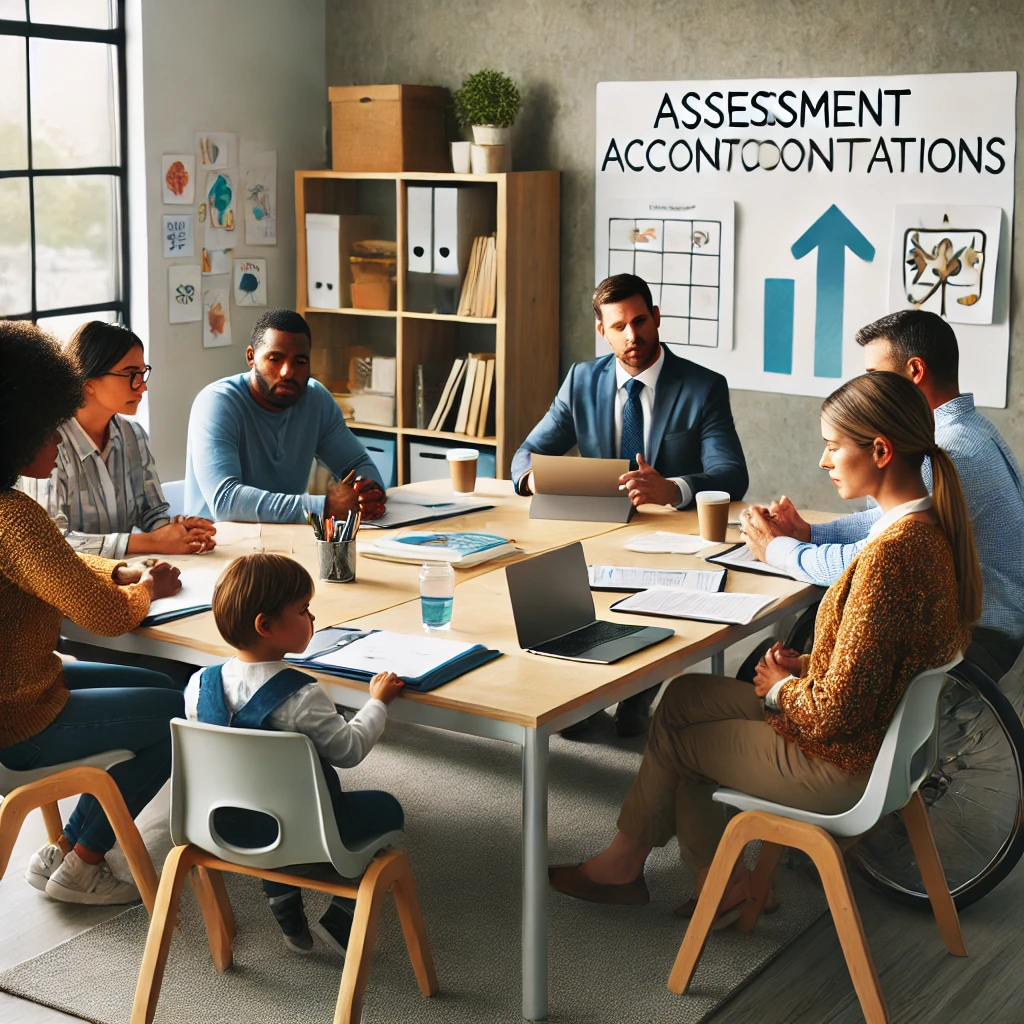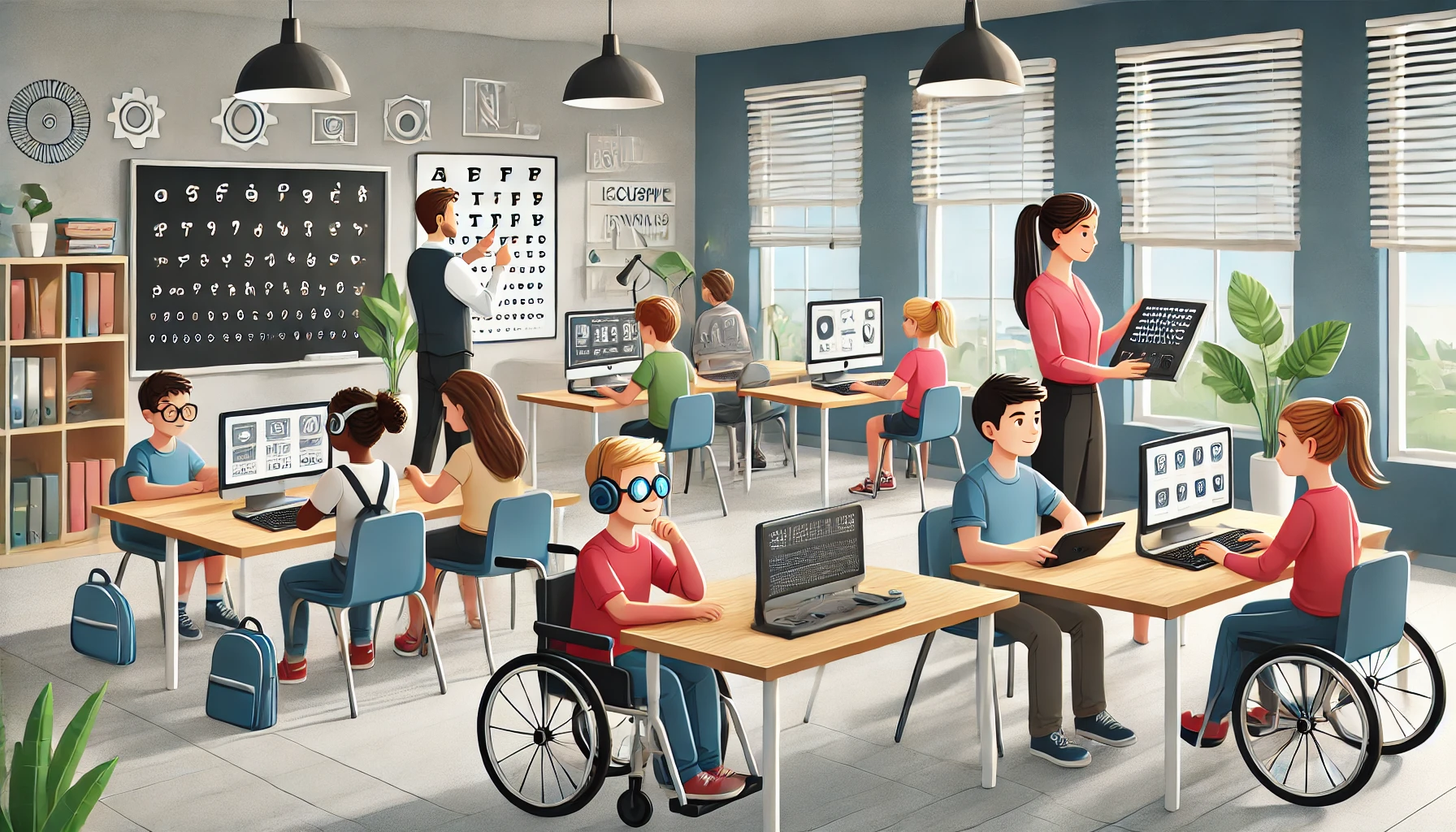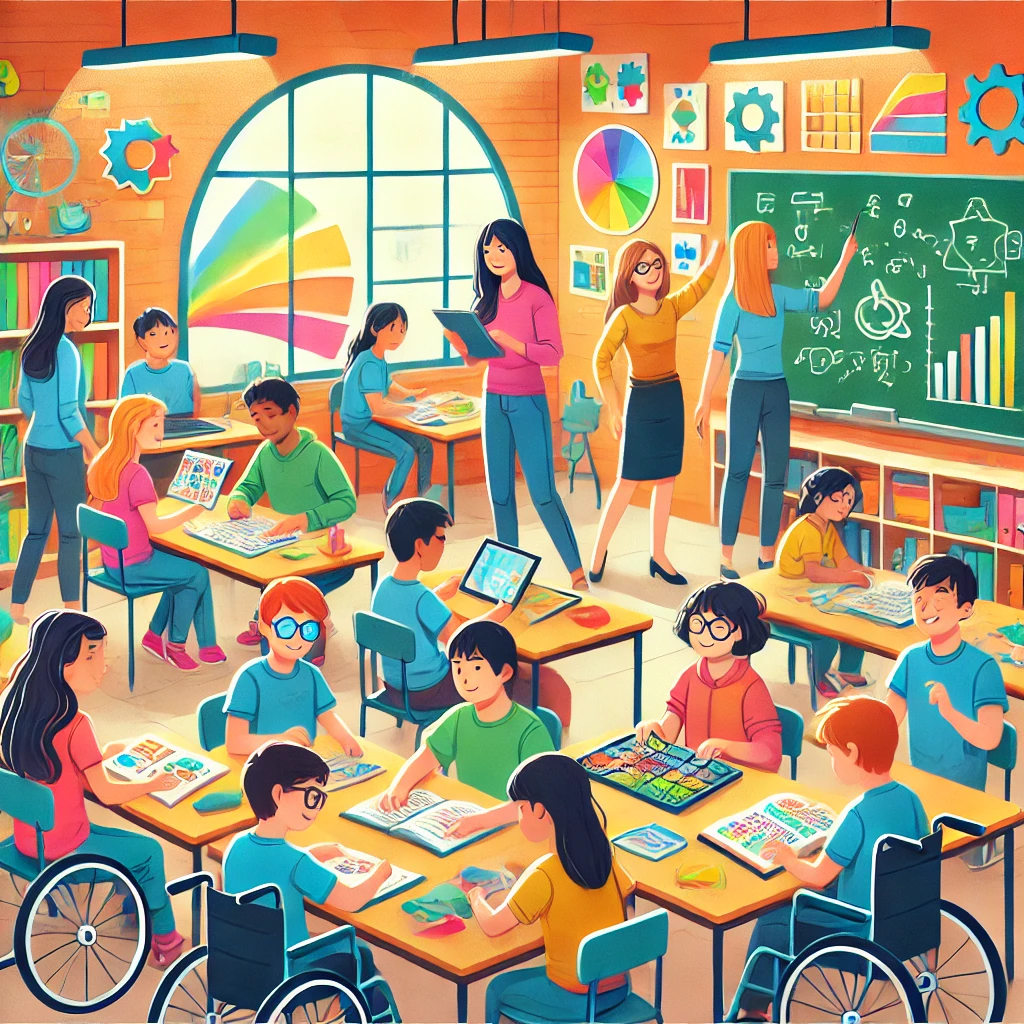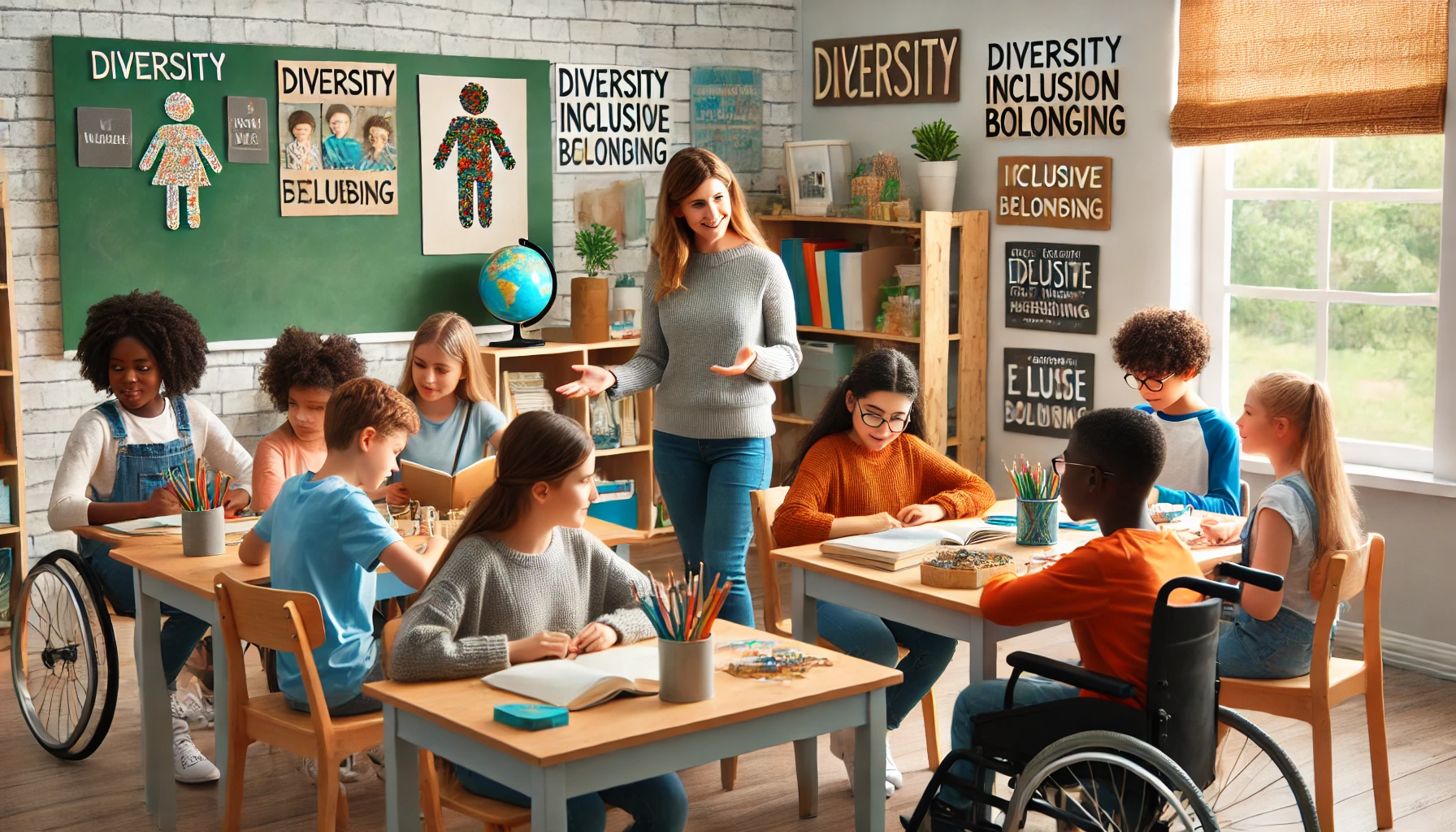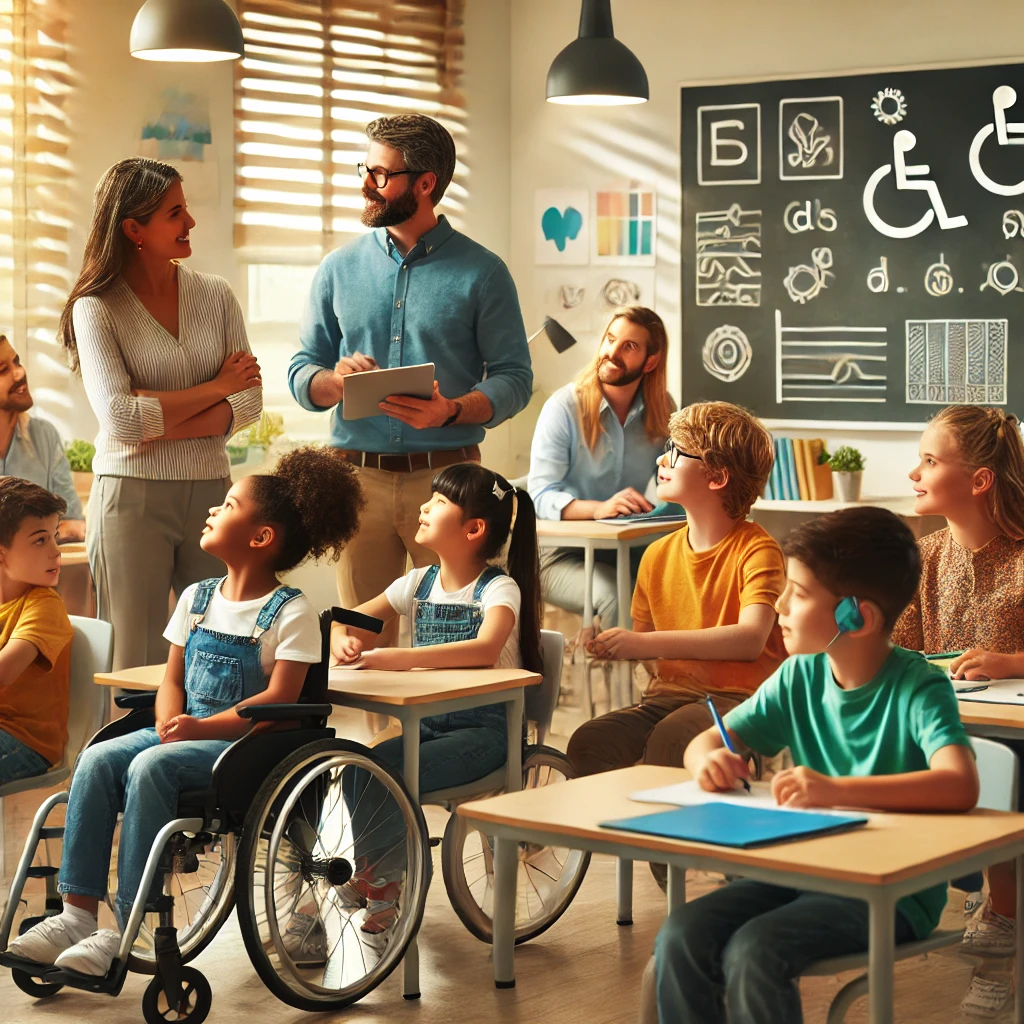Understanding Assessment Accommodations
If you’re a parent, caregiver, teacher, or therapist working with kids who have special needs, knowing the ins and outs of assessment accommodations is your secret weapon. These adjustments help level the playing field, making sure that any tests or assessments reflect what our kiddos truly know and can do.
Why Accommodations Matter
Assessment accommodations are simple changes in how tests are given or taken, letting students with disabilities participate just like any other student in state or district assessments (Parent Center Hub). Now, don’t get it twisted—accommodations aren’t about making tests easier. They’re about collecting authentic data on what students can do without unnecessary hurdles getting in the way (All Children Learning).
Your friendly neighbourhood Individualised Education Program (IEP) is where all these accommodations get sorted. Thanks to the Individuals with Disabilities Education Act (IDEA), IEPs have to list the right accommodations so that students can show off their academic and functional chops during tests (Parent Center Hub). Every kid is unique, and the accommodations fit like a glove to ensure everyone gets a fair shot.
Types of Accommodations
We’ve got a variety of assessment accommodations lined up to meet the different needs of students with disabilities. Let’s break it down:
- Presentation Accommodations: This is about how the test content comes across. Instructions might be simplified, visuals could be used, or extra time might be given for reading comprehension.
- Response Accommodations: How the student answers. Maybe they’ll need assistive technology, or they could offer answers verbally or with a scribe’s help.
- Setting Accommodations: Where the magic happens. A quiet room, a specific seat, or maybe some sensory supports to keep everyone calm and focused.
- Timing Accommodations: Time is the name of the game. More time, breaks, or flexible schedules help keep things smooth.
- Organization Skills Accommodations: Helping hands in organizing test materials, breaking tasks into bites, or supporting with visual organizers to finish tasks on the up-and-up.
Knowing the different types of assessment accommodations makes sure kids with special needs have a fair shake at showing what they can do. Picking the right accommodations means you’re building a supportive spot that captures a student’s real academic and functional skills.
IEP Team and Accommodations
Being a parent or caregiver to a special needs kid means getting to grips with the ins and outs of the Individualized Education Program (IEP) team. It’s about making sure your child gets the right help to learn and take tests without a hitch.
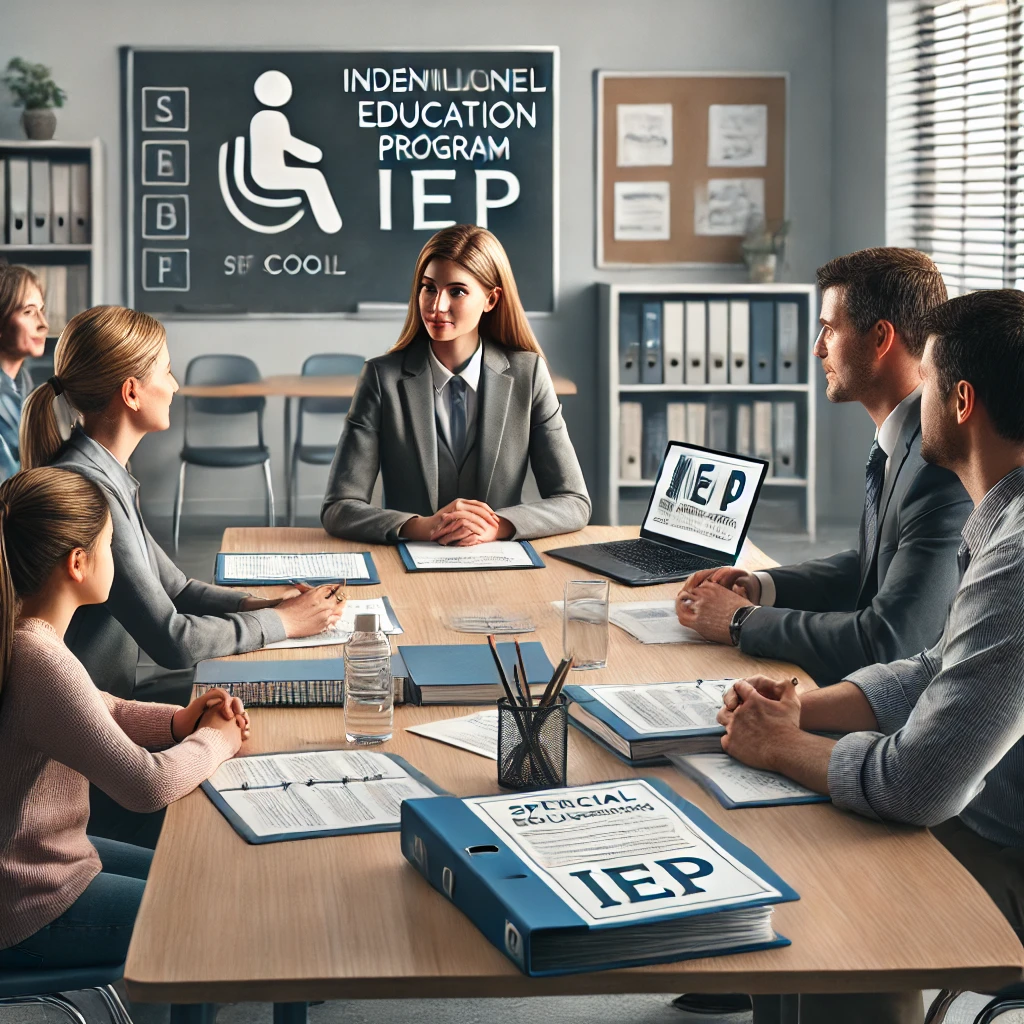
IEP Responsibilities
The IEP team is like your kid’s personal squad of teachers, education pros, and maybe a few others who’ve got a stake in your child’s schooling journey. They’re the folks deciding what kind of help your kid needs to rock those tests, making sure they get a fair shot with enough support to shine. The rules and regulations are pretty clear – the IEP’s gotta spell out what help’s needed so your child can show what they know when it comes to state and school tests.
They’re like detectives, figuring out what might trip up your kid in school and cooking up some creative solutions to get around those hurdles. It’s not a solo mission – teamwork makes this whole thing work so everyone’s on the same page, giving your kid the right kinda support to help them succeed.
Individualized Accommodations
Drawing up the game plan for accommodations is all about taking a good look at where your child might stumble and figuring out how to smooth the road ahead. You’ve got the dream team – a parent, the regular teacher who’s with the class all day, the special ed pro who’s got all the nifty tricks, someone from the school who’s in the know, and whoever else might offer a useful perspective.
Accommodations are broken down into four buckets: presentation, response, setting, and timing and scheduling. Fancy lingo aside, these are the tweaks that make things a whole lot easier for your kid, letting them learn in a way that suits them like IRIS at Vanderbilt University explains. Picking out the right accommodations isn’t just a guessing game. It’s all about making sure your kid can tackle tests head-on without messing with the fairness or the scores.
By jumping into the IEP talks, you’re helping paint a better picture of what best helps your child. Be the loudest voice in the room when it’s time to set up accommodations. That’s how you start paving a smoother path for your child’s education. A well-armed advocate like you means your child gets the school experience they deserve, growing both in learning and confidence.
Differentiating Classroom and Assessment Accommodations
When considering the needs of students with disabilities, it’s crucial to know the difference between what happens in the classroom and during tests. This clarity makes sure that students have equal chances to show what they know, without messing up the test’s fairness.
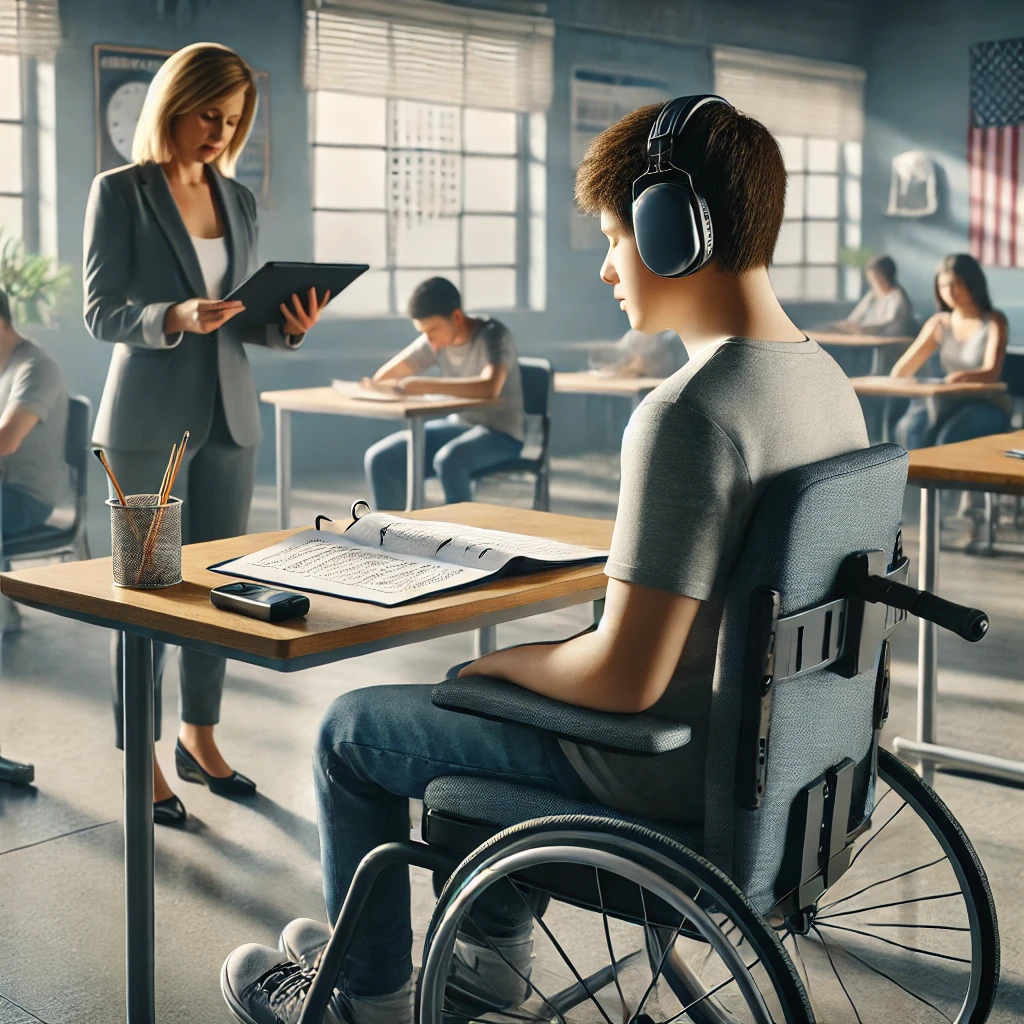
Classroom vs. Assessment Accommodations
Classroom help, as pointed out by the Parent Center Hub, means adjusting how teachers present stuff or what they use, so every student can grasp the lessons and show what they’ve learned. These tweaks cater to each student’s quirks but don’t change the academic stuff they need to learn. The whole point is crafting an environment where students blossom.
Meanwhile, test accommodations, also mentioned by the Parent Center Hub, adjust the test format or how it’s given, so students can really show their smarts. These don’t mess with the test’s core content; instead, they give students the fair chance to highlight their abilities in a standard testing setup. Matching these test tweaks to the student’s needs ensures they get a just evaluation of their skills.
Guidelines for Assessment Accommodations
Test tweaking rules from the Parent Center Hub stress that the help students get during tests should reflect what they receive in class. But note, not every classroom tweak is fit or allowed during big state or district tests. Picking the right test changes should be a group decision made by the student’s Individualized Education Program (IEP) team, focusing on the student’s needs and the rules of the test.
Moreover, according to the IRIS Center – Vanderbilt University, these test changes are crucial so that students can properly demonstrate what they know during evaluations. These adjustments aim to level the playing field without changing what the test measures. By picking fitting test adjustments, teachers ensure students get a fair shake, being judged by their knowledge, not their limitations.
Grasping the split between classroom and test accommodations is key for teachers, parents, and caretakers of students with unique needs. By sticking to the rules and working with the IEP team, schools can personalize help to fit each student, letting them show what they can do in assessments and reach their full capacity.
Exploring Testing Accommodations
Special needs students deserve an opportunity to shine in exams, showing off their knowledge just like everyone else. That’s why understanding how to adjust tests for these students is such a big deal. Testing accommodations are the tweaks we make to help kids read the questions and express their answers without changing what the test is all about. They level the playing field, ensuring each child can share what they’ve learned.

Testing Accommodations Overview
These accommodations aim to knock down obstacles, helping kids focus on what they know rather than how they might struggle with the standard test setup. By changing how test info is shared or letting kids use different tools for answers, accommodations give them a better shot at showing their true potential on big exams. Importantly, these tweaks keep the test’s main purpose intact (CASAS).
It’s crucial to have clear and consistent guidelines for applying these accommodations so every student has an equal chance. Educators, by doing this, create an environment where students feel supported and able to express their skills without unnecessary stress.
Factors Influencing Accommodations
Laws like the Rehabilitation Act Amendments of 1998 and the Individuals with Disabilities Education Improvement Act of 2004 have laid the groundwork for testing adjustments. They ensure every student, no matter their challenges, gets a fair shot at demonstrating their knowledge.
Local schools and organizations have the job of making sure these accommodations are available and accessible. Students often need to provide proof, like an education plan or some paperwork from their doctor, to show they require specific help.
On the ground, it’s up to the local test folks to tweak the way tests are given, sticking to what’s needed based on the student’s paperwork. This ensures that tests aren’t just a hurdle but an opportunity for each student to shine.
By grasping the rules and factors behind these testing support options, educators and caregivers can better guide students through their exams. It’s about making sure special needs kids have the right help to show what they know, allowing them to succeed in testing just like their peers.
Specific Accommodations for Special Needs Students
Helping special needs students succeed in assessments starts by customizing the support to fit each student’s needs like a glove. Here’s a look at some accommodations that can make a big difference during assessments.
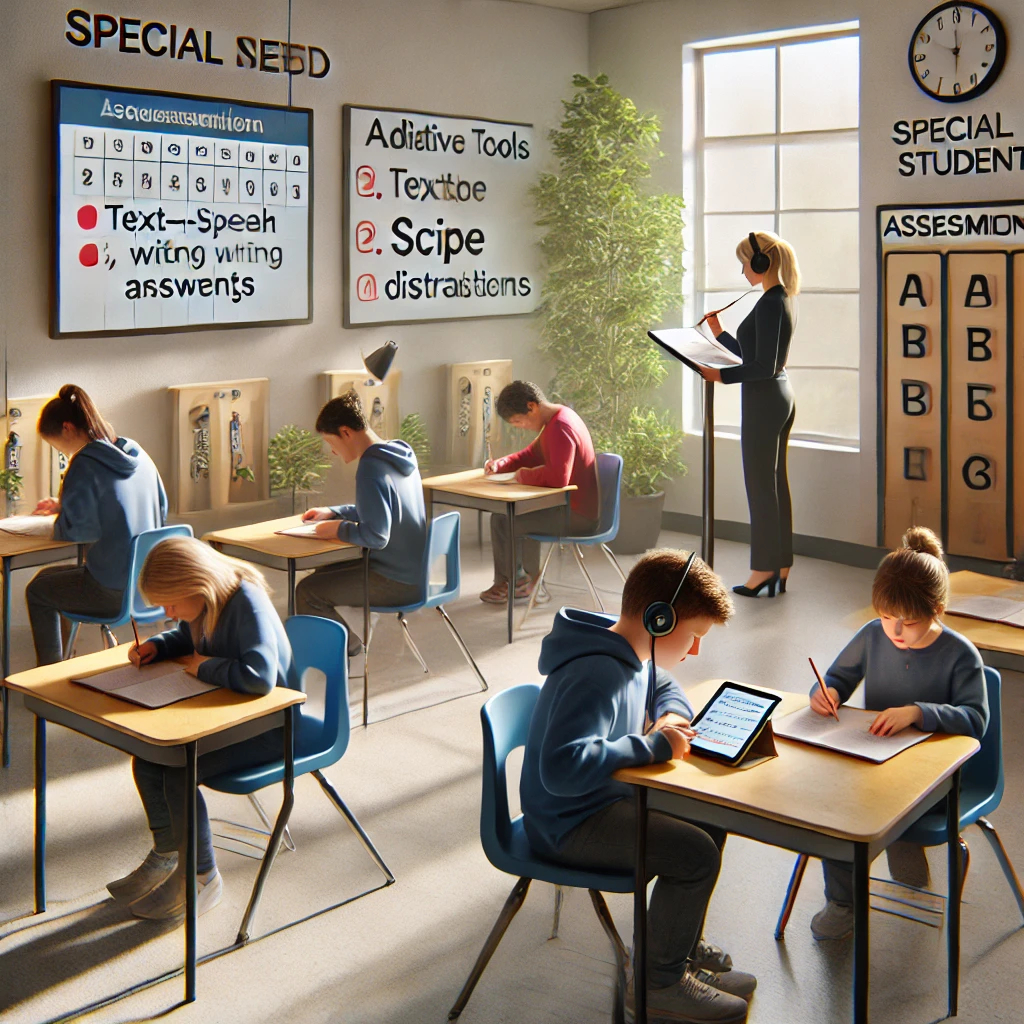
Presentation Accommodations
Presentation accommodations make sure the info given to students is clear and accessible. Special needs students might find it easier to understand if they can listen to audio recordings instead of staring at pages, have fewer things to concentrate on at once, or have someone read out the questions (Understood). Tweaking how we present materials can really help open the door to comprehension.
Response Accommodations
The way students respond can be just as important as the questions themselves. For students with special needs, this might mean speaking their answers to a person who writes them down, using a recorder to capture their thoughts, or typing out answers on a computer (Understood). These tools help them communicate what they know without barriers.
Setting Accommodations
Where tests are taken can make a world of difference. Special needs students might do better in quieter settings, seated where they’re most comfy, or with special lights or sound setups. Creating the right environment helps students focus and stay calm, giving them a fair shot at achieving their best.
Timing Accommodations
Sometimes, it’s all about the clock. Special needs students may need extra time or breaks while taking tests (Understood). Allowing them a rhythm that works best for them can relieve pressure and show their true abilities without the ticking clock stressing them out.
Organization Skills Accommodations
Getting organized can be tough, but a few tweaks can make a big difference. Special needs students might benefit from using alarms to manage time, highlighters for key information, planners for staying on top of assignments, and direct help with study skills. These approaches help them juggle tasks and time like pros, setting them up for academic wins.
By putting these accommodations into practice, teachers and helpers can create a supportive environment where special needs students can shine and show what they’re capable of. Personalizing these supports is crucial for offering everyone a fair chance at success.
Legal Framework and Testing Accommodations
Getting a handle on the laws around test accommodations for special needs students is key if we’re serious about fairness in education. Having a good grip on the rules and lining up with ADA requirements are big steps in making sure every student gets the help they need to succeed.
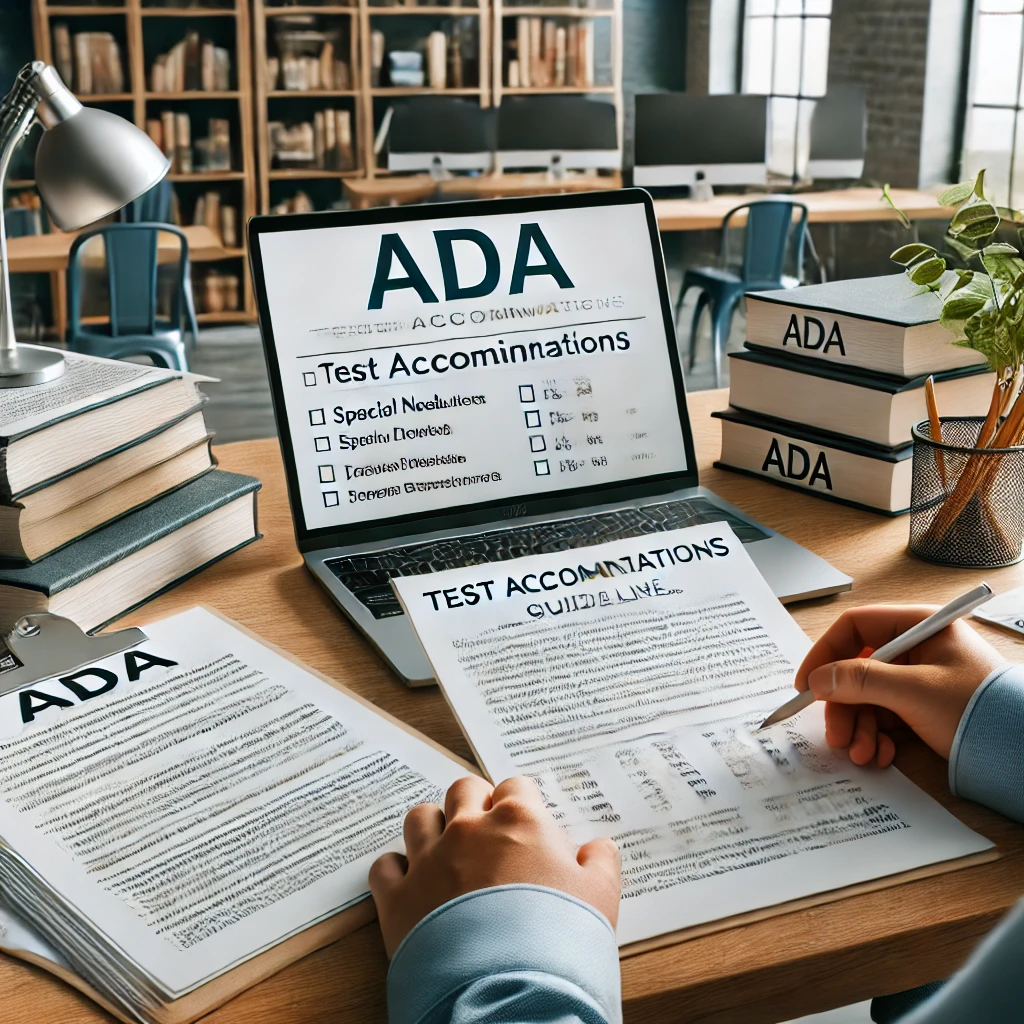
Legislation Impacting Accommodations
Laws like the Rehabilitation Act Amendments of 1998 and the Individuals with Disabilities Education Improvement Act of 2004 lay down the groundwork for what schools should do for students with disabilities. These laws push for schools to be welcoming places where every kid, regardless of their challenges, gets the chance to shine. They highlight how recognizing and tackling the unique hurdles faced by these students can help level the academic playing field and give everyone a shot at success (CASAS).
ADA Regulations and Compliance
The Americans with Disabilities Act (ADA) is all about making sure folks with disabilities get the accommodations they need, especially when it comes to testing. According to the ADA, a disability is something that significantly messes with a major life activity or function. This law makes sure that students aren’t left out of using available assessment tools and resources, letting them prove their smarts just like anyone else (ADA.gov).
To follow ADA rules, schools and orgs have to provide reasonable accommodations for students who have the right paperwork to back up their needs. This might mean changing how tests are given, using the info from student documentation. Making such changes, like using tools that help everyone or tweaking the test setup, can make a big difference in making sure all test-takers feel supported and included.
By sticking to the laws and ADA guidelines, teachers and test planners can help special needs students get the support they need to show what they’re capable of. Proper testing accommodations don’t just make a more inclusive school scene; they also lift up students with disabilities, helping them to thrive both in school and life.

